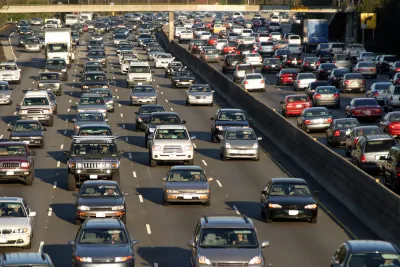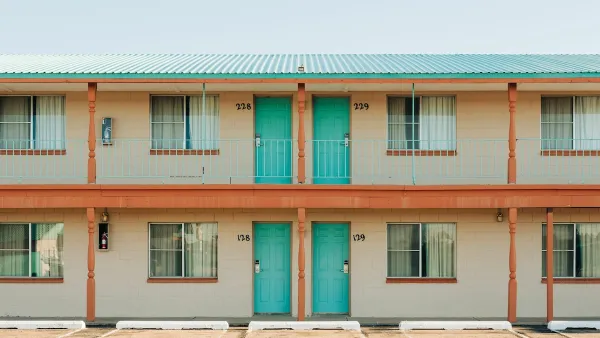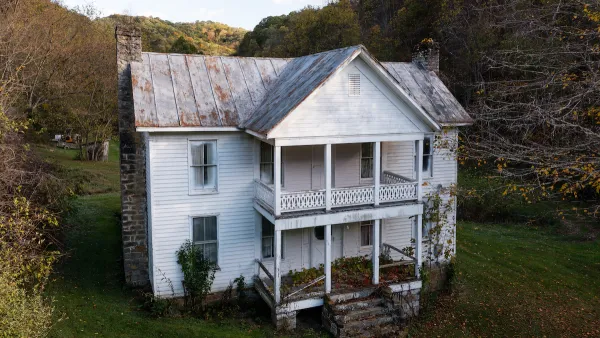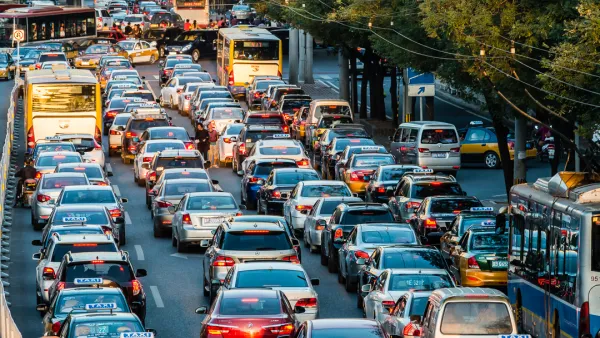A new analysis looks at how income and population density are related to car ownership and some ways that the design of cities can help lessen car dependence.

Henry Grabar writes about trends in car ownership rates and the relationship to the income levels and population density of cities. He asked Issi Romem of Trulia to analyze data for metropolitan areas across the country:
Here’s what Romem found: In dense, transit-rich cities like New York and Boston, vehicle ownership is more closely linked to population density than to income. What kind of neighborhood you live in is likely to align with whether you own a car, or two. In places like Los Angeles and Houston, vehicle ownership is much more closely tied to income. Families who make more money buy more cars.
He notes that some cities show a mix of factors. In Chicago, for example, the lowest-income areas have low car ownership rates, but ownership rates increase both with income and density. "On average, Romem finds, rising income and falling population density have approximately the same positive correlation with car ownership," says Grabar.
Grabar considers what these findings mean for policy and environmental initiatives like the Green New Deal. He suggests that city designs that support car driving as a choice rather than a necessity would provide the biggest environmental and social benefits.
"We can try to build more cities like these, where jobs are accessible by fast, frequent transit and housing is dense enough to support walkable amenities. Or we can make it possible for more people to live in the neighborhoods that have gotten something right," he concludes.
FULL STORY: Where Rich People Don’t Own Cars

National Parks Layoffs Will Cause Communities to Lose Billions
Thousands of essential park workers were laid off this week, just before the busy spring break season.

Retro-silient?: America’s First “Eco-burb,” The Woodlands Turns 50
A master-planned community north of Houston offers lessons on green infrastructure and resilient design, but falls short of its founder’s lofty affordability and walkability goals.

Delivering for America Plan Will Downgrade Mail Service in at Least 49.5 Percent of Zip Codes
Republican and Democrat lawmakers criticize the plan for its disproportionate negative impact on rural communities.

Test News Post 1
This is a summary

Test News Headline 46
Test for the image on the front page.

Balancing Bombs and Butterflies: How the National Guard Protects a Rare Species
The National Guard at Fort Indiantown Gap uses GIS technology and land management strategies to balance military training with conservation efforts, ensuring the survival of the rare eastern regal fritillary butterfly.
Urban Design for Planners 1: Software Tools
This six-course series explores essential urban design concepts using open source software and equips planners with the tools they need to participate fully in the urban design process.
Planning for Universal Design
Learn the tools for implementing Universal Design in planning regulations.
EMC Planning Group, Inc.
Planetizen
Planetizen
Mpact (formerly Rail~Volution)
Great Falls Development Authority, Inc.
HUDs Office of Policy Development and Research
NYU Wagner Graduate School of Public Service





























